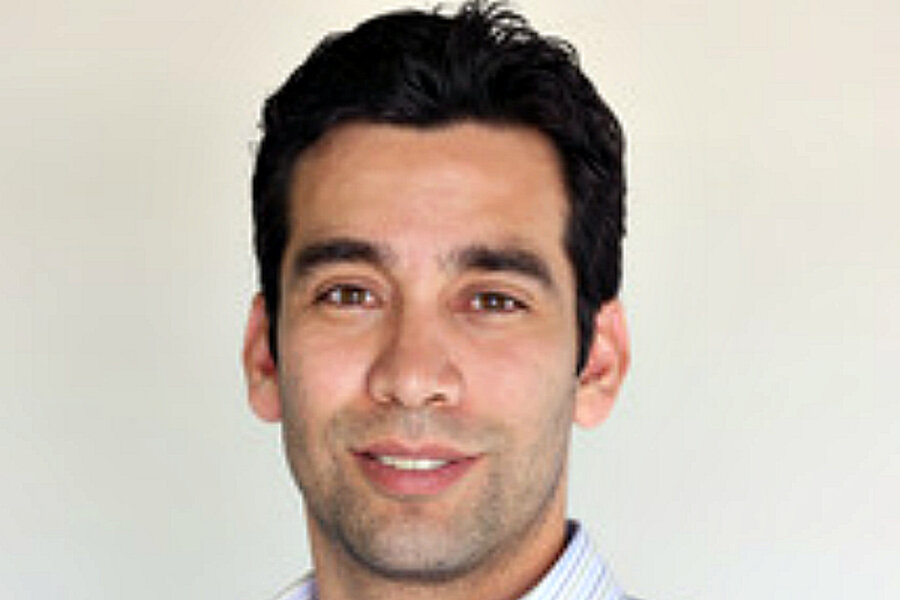Money pools: a centuries-old savings tool reinvented
Loading...
When he was growing up in San Diego, Francisco Cervera’s family sometimes struggled like so many American families do today. Money was tight. Unpredictable, sometimes-volatile expenses made saving money virtually impossible. “We were pretty close to being poor, if not poor,” Cervera remembered.
Since his mother worked, after school Cervera would walk to his aunt’s house. He recalls people coming and going at her house on some of those afternoons, often dropping off money.
These were not untoward transactions going on.
Cervera’s aunt was a coordinator in what is sometimes called a money pool. “She was in charge of calling people and making sure they stop by and drop off the money,” he said. “That is the way it is still done.”
Money pools are one of the world’s oldest savings mechanisms, started over 1,000 years ago. People without access to more formal savings tools still widely use money pools in countries and cultures worldwide.
And money pools have just as many names. They are called Fokontany in Madagascar, Hui in Taiwan, and Pandero in Peru. Among Cervera’s Mexican relatives, money pools were called Cundina.
Regardless of what you call a money pool, the basic concept remains the same. A group of people contributes on a regular basis to a common fund, and members take turns collecting the resulting lump sum. So, 10 people might contribute $100 each month to a money pool and take turns collecting $1,000 each over 10 months.
Many people in Cervera’s Mexican-American community routinely tapped into money pools for larger purchases.
“Buying a computer for school, buying my brother’s first car, we always did money pools,” Cervera said.
As an adult, Cervera and his brother Luis have revolutionized that practice by taking the money pool concept digital, through eMoneyPool. This online tool facilitates the creation of money pools without the tedium of face-to-face money exchanges like the kind Cervera’s aunt managed in San Diego.
This elegantly leverages modern technology, allowing people to create their own private money pools among friends anywhere in the United States or to join some other pool open to eMoneyPool members.
The tool has some enticing safeguards. The site includes identity verification for all users. Newcomers to eMoneyPool are limited to $100 contributions and must take one of the last five slots to collect the lump sum. There is also a guarantee: If somebody fails to pay, eMoneyPool will step in and fill in the missing contributions.
But even online, saving isn’t easy when money is tight. But just like they have for 1,000 years, Cervera’s online money pools still offer a group dynamic which can be a powerful psychological incentive to contribute and save money successfully.
“Saving money by yourself is a nice idea. But when you are living at the poverty level, everything is drawing on your cash,” Cervera explained. “Money pools change the idea of saving because you are saving as a team.”
In other words, the team aspect of money pools helps you not spend every penny of your own money.
“It changes the desire to save from a want to a need,” Cervera said. “People think, ‘Now I have to put that money away because the group is counting on me.’ ”
The Cervera brothers are now taking steps to allow eMoneyPool to evolve further to also serve as a bridge between their underbanked customers and formal lending institutions.
It’s all about helping eMoneyPool users — who may lack access to the tools to develop more conventional credit histories — to establish credit. Participants in eMoneyPool already receive eMoneyPool credit ratings based on their eMoneyPool payment histories. With a user’s permission, eMoneyPool will share that data with a credit-rating agency.
But the Cerveras are also taking steps to deliver that kind of eMoneyPool payment history data — again, with a user’s permission — directly to select lending institutions. This creates a positive payment history for users and an ability for borrowers and lenders to connect who might otherwise be off each other’s radar screens.
“We are creating a bridge for our users to lending institutions, but we are doing it in a way that is comfortable and familiar to them, with money pools,” Cervera explained.
The Cerveras’ eMoneyPool is growing. After two years of working in beta, the site launched publicly in early 2013, and participants have saved around $300,000.
A new user interface is now on its way, and by 2015 the brothers hope to have arrangements with hundreds of financial institutions to share the credit data from interested eMoneyPool customers.
These ideas exponentially change the potential impact of money pools from the kind managed by Cervera’s aunt back in San Diego.
“The original way is so incredibly inefficient,” Cervera said. So the Cervera brothers came up with some of the biggest changes money pools may have seen in over a thousand years.
• This article originally appeared at PopTech, a community of global innovators that catalyze social impact through renowned Fellows programs, incubated initiatives, thought-provoking salons, and an annual conference in Camden, Maine.







